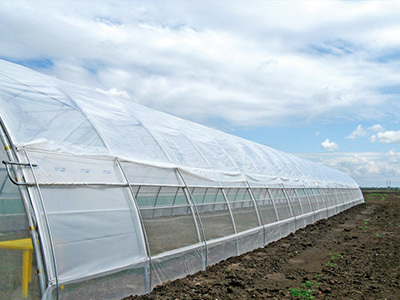Enhancing Vineyard Management with Bird Netting Solutions
In vineyard agriculture, one of the significant challenges faced by growers is the threat posed by birds. Birds are often attracted to vineyards, drawn by the ripe grapes that signal a ready food source. As a result, vineyard owners must consider effective measures to protect their crops while promoting overall vineyard health. One of the most effective solutions is the implementation of bird netting.
Bird netting serves as a physical barrier that prevents birds from accessing the grapes. By covering the vineyard with specially designed nets, growers can significantly reduce the risk of crop loss due to bird feeding. This protective measure not only helps secure the immediate yield but also contributes to the long-term sustainability of the vineyard. When birds are kept at bay, grapes can mature fully without interruption, leading to better quality fruit that meets the standards of winemakers and consumers alike.
When selecting bird netting for vineyard agriculture, it’s essential to consider the type of netting material, mesh size, and installation methods. The ideal net should be lightweight but durable, allowing for easy handling and installation. Mesh size is also crucial; it should be small enough to keep out birds while allowing sunlight and rain to penetrate, ensuring that the vines receive adequate nourishment. Additionally, proper installation is key to maximizing the effectiveness of the netting. This may involve securing the net at various heights and angles to accommodate the specific layout of the vineyard.
Another important aspect to consider is the environmental impact of using bird netting. Growers should opt for nets made from non-toxic materials that do not harm the ecosystem. Furthermore, it’s important to regularly monitor the condition of the netting to prevent entanglement and ensure that it remains effective throughout the growing season. Regular maintenance will help prolong the lifespan of the netting and further protect the vineyard against avian pests.
In conclusion, incorporating bird nets into vineyard agriculture is an effective strategy for safeguarding crops from bird damage. By understanding the benefits, material choices, and installation techniques, vineyard owners can enhance their management practices, ultimately leading to higher yields and better-quality grapes. While bird netting is not a one-size-fits-all solution, it certainly plays a crucial role in modern vineyard management, allowing for the successful growth of grapes and the sustainability of agricultural practices.
Bird netting serves as a physical barrier that prevents birds from accessing the grapes. By covering the vineyard with specially designed nets, growers can significantly reduce the risk of crop loss due to bird feeding. This protective measure not only helps secure the immediate yield but also contributes to the long-term sustainability of the vineyard. When birds are kept at bay, grapes can mature fully without interruption, leading to better quality fruit that meets the standards of winemakers and consumers alike.
When selecting bird netting for vineyard agriculture, it’s essential to consider the type of netting material, mesh size, and installation methods. The ideal net should be lightweight but durable, allowing for easy handling and installation. Mesh size is also crucial; it should be small enough to keep out birds while allowing sunlight and rain to penetrate, ensuring that the vines receive adequate nourishment. Additionally, proper installation is key to maximizing the effectiveness of the netting. This may involve securing the net at various heights and angles to accommodate the specific layout of the vineyard.
Another important aspect to consider is the environmental impact of using bird netting. Growers should opt for nets made from non-toxic materials that do not harm the ecosystem. Furthermore, it’s important to regularly monitor the condition of the netting to prevent entanglement and ensure that it remains effective throughout the growing season. Regular maintenance will help prolong the lifespan of the netting and further protect the vineyard against avian pests.
In conclusion, incorporating bird nets into vineyard agriculture is an effective strategy for safeguarding crops from bird damage. By understanding the benefits, material choices, and installation techniques, vineyard owners can enhance their management practices, ultimately leading to higher yields and better-quality grapes. While bird netting is not a one-size-fits-all solution, it certainly plays a crucial role in modern vineyard management, allowing for the successful growth of grapes and the sustainability of agricultural practices.
Key words:
Related News
11-22
Keywords:
11-21
11-20
CONTACT US
Email: sales8@meyabond.com
Tel: +8618911966213
No.3 Yard, ZhongHe Road, 100071,FengTai District, Beijing, China
Email: sales6@meyabond.com
Tel: +8618911963856
No.3 Yard, ZhongHe Road, 100071,FengTai District, Beijing, China
















